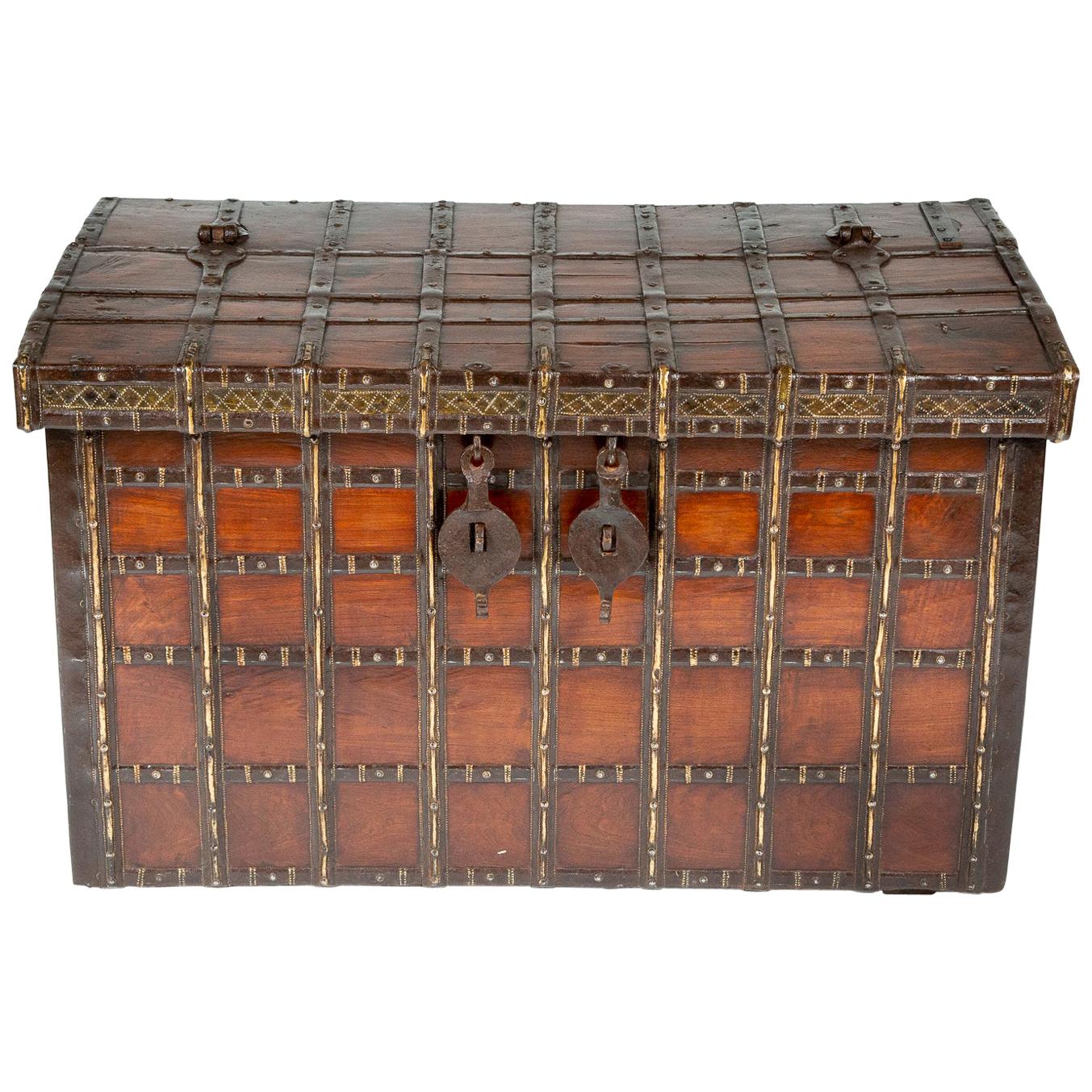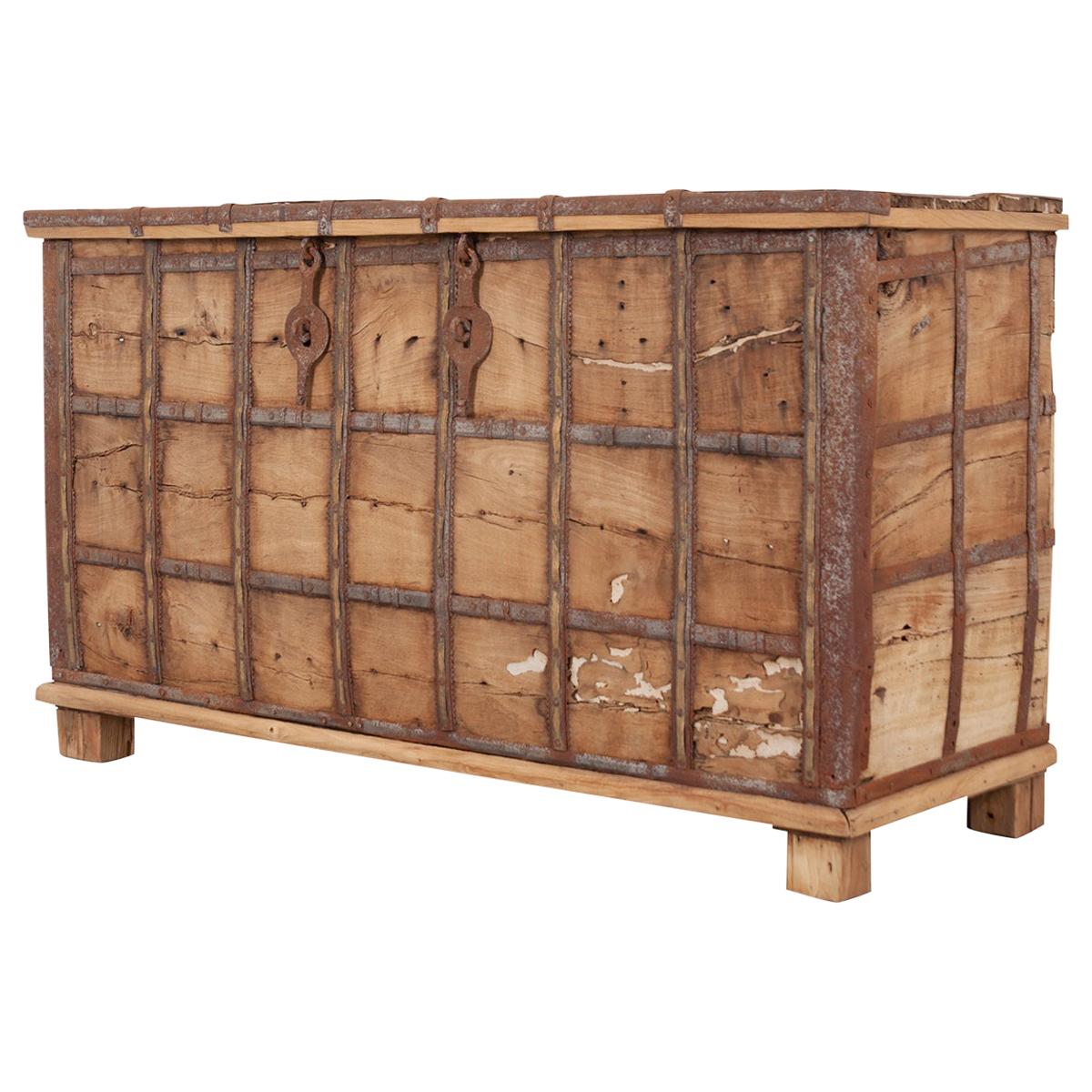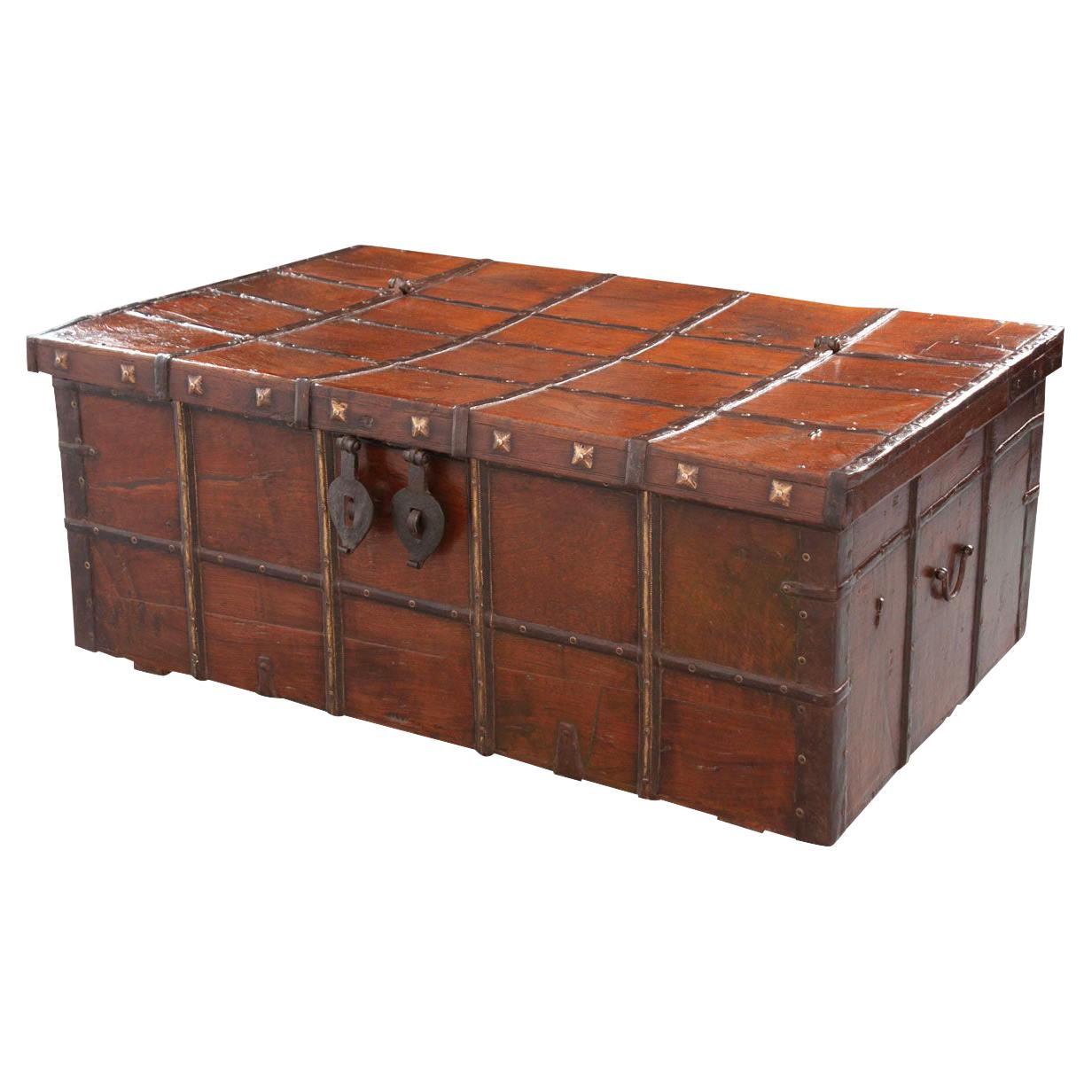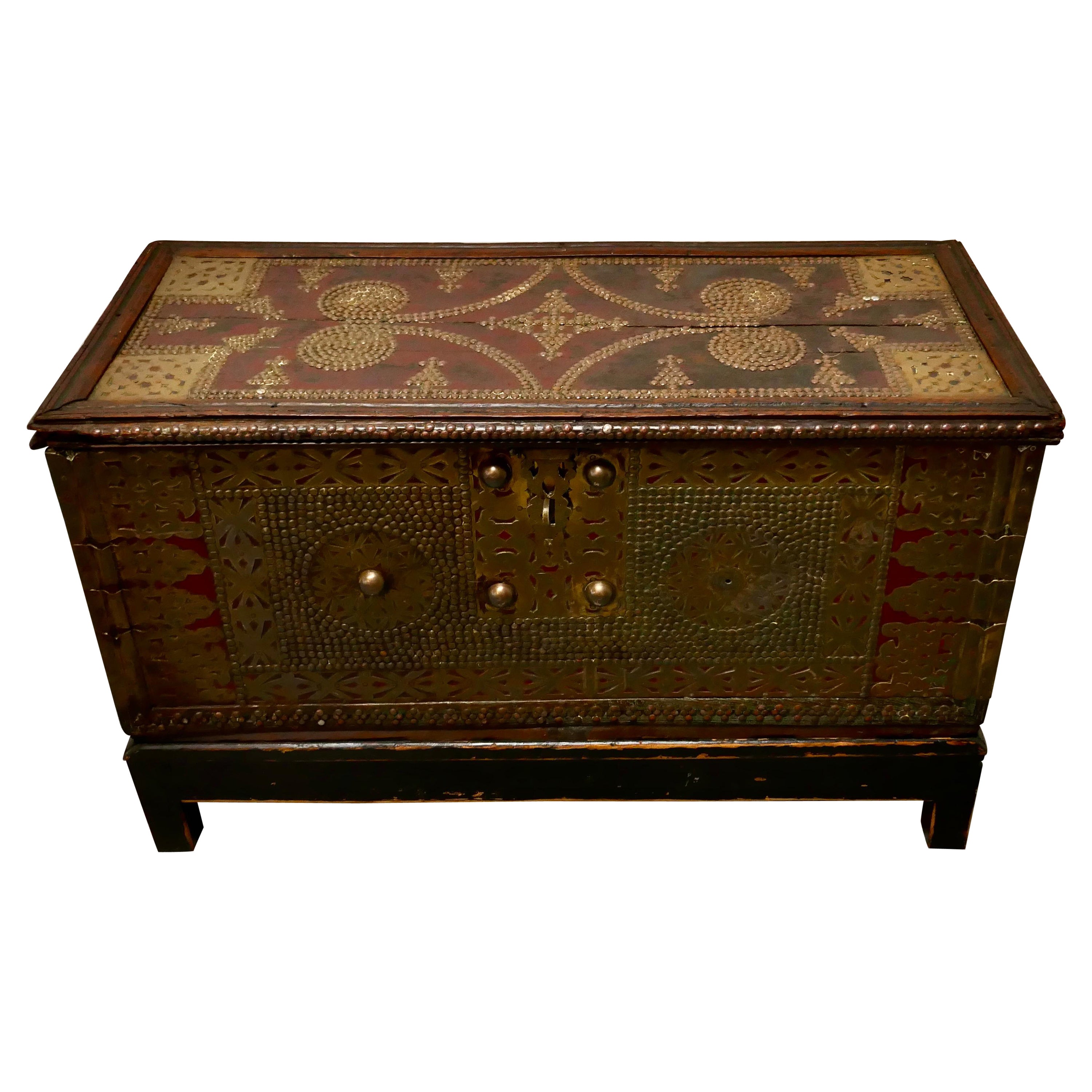Items Similar to 19th Century Victorian Teak & Mahogany Seamans Trunk, circa 1890
Want more images or videos?
Request additional images or videos from the seller
1 of 15
19th Century Victorian Teak & Mahogany Seamans Trunk, circa 1890
About the Item
Antique late-19th century Teak and mahogany domed top ship's trunk, inscribed with initials, with brass strapped corners and fittings, stop handles of steel, with pair of original working locks with keys.
- Dimensions:Height: 23.63 in (60 cm)Width: 26.38 in (67 cm)Depth: 22.84 in (58 cm)
- Materials and Techniques:
- Place of Origin:
- Period:
- Date of Manufacture:1890
- Condition:Wear consistent with age and use. Minor fading. In Good Condition - wear as expected.
- Seller Location:Royal Tunbridge Wells, GB
- Reference Number:
About the Seller
5.0
Platinum Seller
These expertly vetted sellers are 1stDibs' most experienced sellers and are rated highest by our customers.
Established in 2014
1stDibs seller since 2015
371 sales on 1stDibs
Typical response time: <1 hour
- ShippingRetrieving quote...Ships From: Woodham, United Kingdom
- Return PolicyA return for this item may be initiated within 14 days of delivery.
More From This SellerView All
- 19th Century Victorian Dressing Case By W Insall & Sons, c.1890Located in Royal Tunbridge Wells, KentAn antique 19th Century victorian dressing case in English bridle leather by W Insall of Birmingham. This piece is lined in green baize with or...Category
Antique 19th Century British Victorian Trunks and Luggage
MaterialsLeather
- Antique 19th Century Victorian Leather Suitcase With Painted Crest c.1850Located in Royal Tunbridge Wells, KentAntique mid-19th Century Victorian leather suitcase with a painted family crest. The suitcase is very well kept and features the original cotton lining, document holder and dust cove...Category
Antique 1850s British Victorian Trunks and Luggage
MaterialsBrass
- 19th Century Victorian Mahogany 24 Bank Drawers, c.1890Located in Royal Tunbridge Wells, KentAntique late-19th Century Victorian mahogany bank drawers, this piece has 24 retractable drawers with original brass campaign handles and enamelled labels. CONDITION In Great Condit...Category
Antique 19th Century British Victorian Sideboards
MaterialsBrass, Enamel
- 20th Century Louis Vuitton Cabin Trunk in Monogram Canvas, France, circa 1930By Louis VuittonLocated in Royal Tunbridge Wells, KentThis example is a Louis Vuitton trunk that dates to around 1910. It is covered in the world famous LV monogrammed canvas, with its leather borders and brass fittings this trunk would...Category
20th Century French Decorative Boxes
MaterialsLeather, Canvas
- 20th Century Louis Vuitton Trunk, France c.1930By Louis VuittonLocated in Royal Tunbridge Wells, KentAn exquisite and complete Louis Vuitton trunk from the early part of the 20th century. An absolutely essential item for elite travellers of its time the trunk is adorned in the iconic LV monogrammed canvas, accented by lozine trim and brass fittings. This trunk stood as the epitome of luxury over 100 years ago, boasting an unparalleled level of sophistication and elegance, it remains a timeless masterpiece that transcends eras. The captivating allure of the Louis Vuitton trunk transforms it into more than a mere luggage accessory; it becomes a focal point for any room. With its impressive dimensions, it is perfectly suited as a striking coffee table, side table, or even as a standalone centrepiece, seamlessly integrating into any interior, whether modern or traditional. An extraordinary piece that not only pays homage to the past but also serves as a statement of unparalleled luxury in the present. A brief history about Louis Vuitton trunks: Louis Vuitton was born in 1821 to a farmer and milliner and came from a long-established working-class family in eastern France. Vuitton grew up understanding the effects of perseverance and a strong work ethic from watching his family. At the age of 16, he made the decision to walk 292 miles from his hometown to Paris to try and make a new life for himself. When he arrived the city was in the midst of industrialization with current modes of transportation evolving quickly allowing for longer journeys. With this came the need for sturdy travel pieces. Vuitton was taken as an apprentice for a successful box maker and packer named Monsieur Marechal. He learned to craft durable containers and how to pack them properly – a well-respected profession at the time.In 1854, years after he had mastered his craft and became well respected for it, Vuitton ventured out on his own to open a shop on Rue Neuve des Capucines. It was here that he began to establish himself as a luggage maker. Then, in 1858, Vuitton designed the first Louis Vuitton steamer trunk. At the time trunks had rounded tops to allow for water to run off but this did not allow for convenient stowage. Vuitton introduced a flat, yet waterproof, trunk that was easily stackable. The first of his trunks were outfitted with a grey canvas referred to as Trianon – it wouldn’t be until several decades later that the signature monogram would be introduced. With a burgeoning business, Vuitton moved his family and workplace to Asniere, where he employed twenty workers to craft his trunks. By 1900 he would have 100 employees, and in 1914 the company would more than double in size. After years of success, Vuitton began to experiment with the design of his luggage by introducing a new striped canvas pattern (1876) and later the still well-known Damier print (1888). The hand-painted patterns were developed to prevent counterfeits. Even in the late 1800s, Louis Vuitton was enough of a status symbol to warrant counterfeiting. In 1886, his son George invented and patented an ingenious locking system that made it impossible to pick the lock of their trunks. This lock is still used today. 1892 would prove to be a time of mourning for the family as Louis Vuitton passed...Category
20th Century French Other Trunks and Luggage
MaterialsBrass
- 20th Century Louis Vuitton Trunk, France c.1910By Louis VuittonLocated in Royal Tunbridge Wells, KentAn exquisite and complete Louis Vuitton trunk from the early part of the 20th century. An absolutely essential item for elite travellers of its time the trunk is adorned in the iconic LV monogrammed canvas, accented by lozine trim and brass fittings. This trunk stood as the epitome of luxury over 100 years ago, boasting an unparalleled level of sophistication and elegance, it remains a timeless masterpiece that transcends eras. The captivating allure of the Louis Vuitton trunk transforms it into more than a mere luggage accessory; it becomes a focal point for any room. With its impressive dimensions, it is perfectly suited as a striking coffee table, side table, or even as a standalone centrepiece, seamlessly integrating into any interior, whether modern or traditional. An extraordinary piece that not only pays homage to the past but also serves as a statement of unparalleled luxury in the present. A brief history about Louis Vuitton trunks: Louis Vuitton was born in 1821 to a farmer and milliner and came from a long-established working-class family in eastern France. Vuitton grew up understanding the effects of perseverance and a strong work ethic from watching his family. At the age of 16, he made the decision to walk 292 miles from his hometown to Paris to try and make a new life for himself. When he arrived the city was in the midst of industrialization with current modes of transportation evolving quickly allowing for longer journeys. With this came the need for sturdy travel pieces. Vuitton was taken as an apprentice for a successful box maker and packer named Monsieur Marechal. He learned to craft durable containers and how to pack them properly – a well-respected profession at the time.In 1854, years after he had mastered his craft and became well respected for it, Vuitton ventured out on his own to open a shop on Rue Neuve des Capucines. It was here that he began to establish himself as a luggage maker. Then, in 1858, Vuitton designed the first Louis Vuitton steamer trunk. At the time trunks had rounded tops to allow for water to run off but this did not allow for convenient stowage. Vuitton introduced a flat, yet waterproof, trunk that was easily stackable. The first of his trunks were outfitted with a grey canvas referred to as Trianon – it wouldn’t be until several decades later that the signature monogram would be introduced. With a burgeoning business, Vuitton moved his family and workplace to Asniere, where he employed twenty workers to craft his trunks. By 1900 he would have 100 employees, and in 1914 the company would more than double in size. After years of success, Vuitton began to experiment with the design of his luggage by introducing a new striped canvas pattern (1876) and later the still well-known Damier print (1888). The hand-painted patterns were developed to prevent counterfeits. Even in the late 1800s, Louis Vuitton was enough of a status symbol to warrant counterfeiting. In 1886, his son George invented and patented an ingenious locking system that made it impossible to pick the lock of their trunks. This lock is still used today. 1892 would prove to be a time of mourning for the family as Louis Vuitton passed...Category
20th Century French Other Trunks and Luggage
MaterialsBrass
You May Also Like
- Antique Dowry Chest, Burmese, Teak, Trunk, 19th Century, circa 1890Located in Hele, Devon, GBThis is an antique dowry chest, a Burmese, teak trunk dating to the late 19th century, circa 1890. Attractive Burmese dowry chest Stout teak co...Category
Antique 19th Century Burmese Trunks and Luggage
MaterialsTeak
- Late 19th Century Iron Bound Teak Haveli TrunkLocated in London, GBA late 19th century iron bound teak Haveli trunk.Category
Antique Late 19th Century Asian Blanket Chests
MaterialsTeak
- Indian 19th Century Teak and Iron-Bound TrunkLocated in Baton Rouge, LAThis 19th century, Anglo-Indian solid teak trunk with original iron bindings has been gently sandblasted to give a driftwood, time-worn appearance. It has a hinged top with two iron ...Category
Antique 19th Century Indian Other Trunks and Luggage
MaterialsTeak
- Indian 19th Century Teak and Iron-Bound TrunkLocated in Baton Rouge, LAThis 19th century, Anglo-Indian solid teak trunk with original iron bindings has aged beautifully. It has a striking patina with fantastic texture and grain. The hinged top has two f...Category
Antique 19th Century Indian Other Trunks and Luggage
MaterialsTeak
- 19th Century Zanzibar TrunkLocated in Chillerton, Isle of WightA 19th century Zanzibar trunk. A superb piece showing the wonderful craftsmanship of the brass workers This hardwood chest which originally was p...Category
Antique Early 19th Century Folk Art Trunks and Luggage
MaterialsBrass
- 19th Century Camphor Wood TrunkLocated in Martlesham, GB19th century camphor wood trunk with brass straps and corners, the hinged lid opening to reveal a large compartment space, the sides of...Category
Antique 1860s British Early Victorian Trunks and Luggage
MaterialsHardwood
Recently Viewed
View AllMore Ways To Browse
Teak Ship
Trunk Straps
Mahogany Victorian Pair
Brass Handle Teak
Antique Trunk Key
Antique Trunk Keys
Pair Trunks
Pair Of Trunks
Antique Trunk Straps
Trunks with Locks
Antique Victorian Trunk
Ships Trunk
Antique Trunk Locks
Antique Victorian Trunks
Antique Teak Trunk
Antique Luggage Straps
Antique Ship Trunk
Domed Trunk





